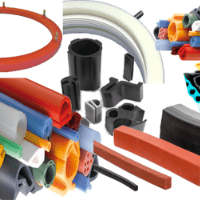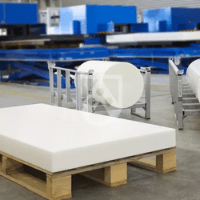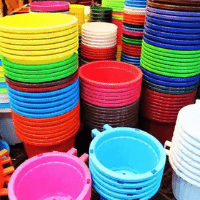Rubber & Plastic Products Industry
Rubber & Plastic Products Industry?
The plastic and rubber industries comprise the establishments that manufacture goods by processing plastic and rubber raw materials. The industry has had global success mainly due to the enormous growth rate of polymer consumption, from raw materials to end-user products.
With the worldwide acceptance of polymer materials across industries such as automobiles, packaging, infrastructure, and construction, more recently it has forayed into medical engineering and leisure products.
While plastics and rubber play a fundamental role in modern society, it is essential to develop a more circular approach to its use in the future due to the growing concerns around plastic waste. Moreover, the incredible versatility and diversity of plastics, from food packaging applications to underground wind turbines, makes recycling and recovery very challenging and expensive.
While many plastics are cost-effective, the value of recovered plastics is often meagre.
Rubber & Plastic Products

Manufacture of rubber tyres and tubes; retreading and rebuilding of rubber tyres

Manufacture of other rubber products

Manufacture of plastic plates, sheets, tubes and profiles

Manufacture of plastic packing goods

Manufacture of builders’ ware of plastic

Manufacture of other plastic products
Role of Shamkris
A Project Report is a document that provides details on the overall picture of the proposed business. The project report gives an account of the project proposal to ascertain the prospects of the proposed plan/activity.
Shamkris will provide a Project report covering Industry License requirements, competitor analysis, Land requirements, machinery requirements, equipment requirements, and financial requirements.
Some of the areas covered in the project report are outlined below:
- Introduction
- Project Description
- Uses and Applications
- Market Survey
- Raw Materials
- Manufacturing Process
- Process Description
- Process Flow Diagram
- Plant Layout
- Details of Plant & Machinery
- Suppliers of Raw Materials
- Suppliers of Plant & Machinery
- Plant Location Factors
- Land & building Required
- Power and Water Required
- Details of Manpower Required
- Financials of the Project
- License and application Certificate
Financials of the Project includes:
- Land and Building Costs
- Plant and Machinery Costs
- Other Fixed Assets
- Fixed Capital Investment
- Raw Material Costs
- Salaries and Wages
- Total Working Capital
- Cost of Project
- Total Capital Investment
- Cost of Production
- Turnover per Annum
- Profitability Analysis
- 5-year Profit Analysis
- Break-even Point
- Resources of Finance
- Cash Flow Statement
- Projected Balance Sheet
FAQ
- 1) Polyethylene Terephthalate (PET or PETE)
- 2) High-Density Polyethylene (HDPE)
- 3) Polyvinyl Chloride (PVC or Vinyl)
- 4) Low-Density Polyethylene (LDPE)
- 5) Polypropylene (PP)
- 6) Polystyrene (PS or Styrofoam)
- 7) Other.
